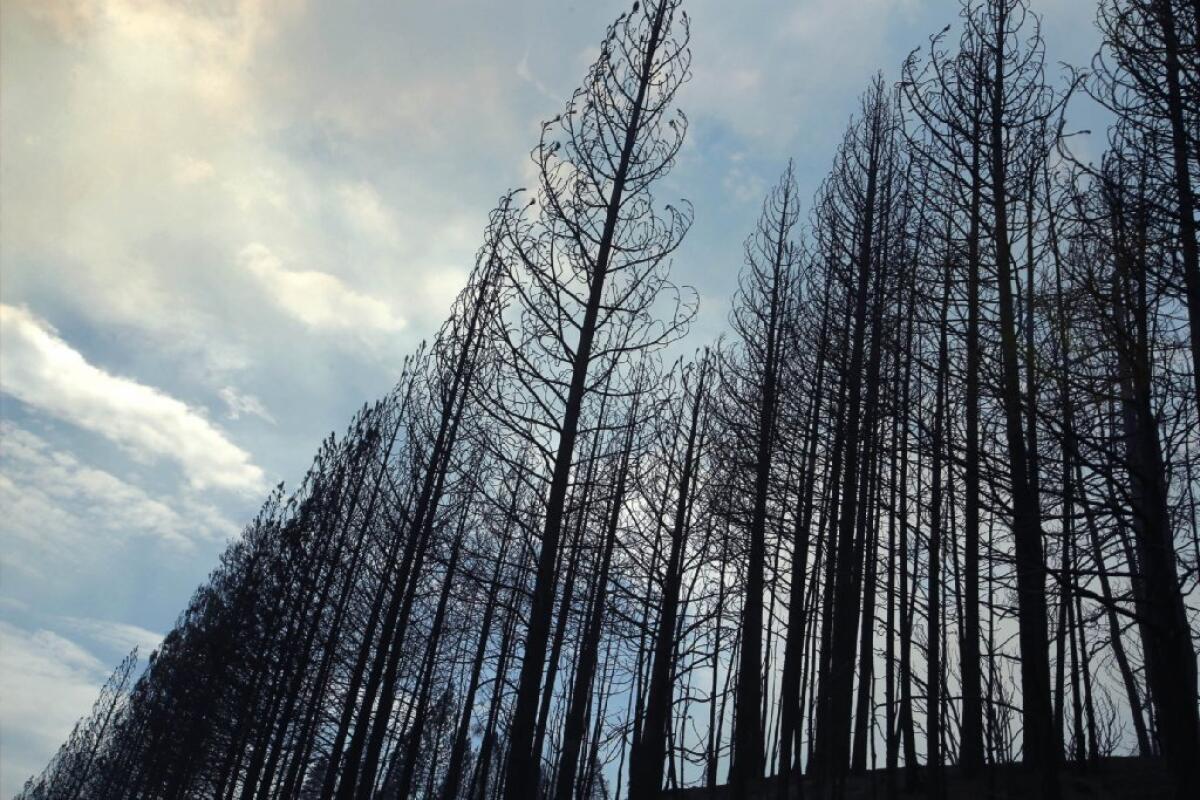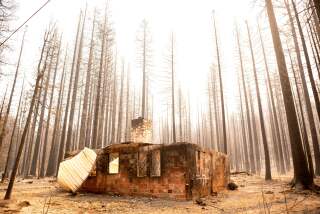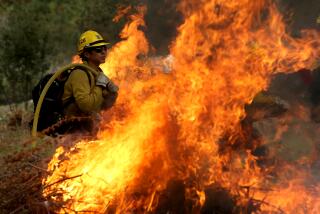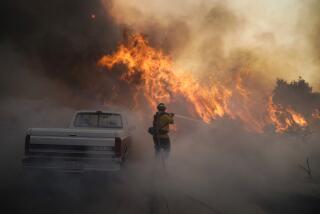Money to burn -- paying to fight California’s wildfires

In seven weeks, California has burned through more than a quarter of its state firefighting budget of $172 million.
The Rim fire in and around Yosemite alone has chewed up 15% of that budget, and the fire season is in its early days yet.
Statewide, California 2013 has gotten maybe a quarter of the rainfall of California 2012.
The Rim fire is the seventh largest in the state’s history.
The average wildfire is now five times bigger than it was 30 years ago.
Get my drift? The blaze business as usual isn’t going to cut it. Conflagration is the new normal.
California needs a new game plan. It needs a plan for fighting fires crafted by experts. (Last year, the U.S. Forest Service blew off the results of a study it asked for from the Rand Corp. Rand said the service should use cheaper water-scooping planes instead of the more expensive retardant-dropping air tankers.)
California also needs a new budget plan crafted by politicians for paying for fighting the fires.
Firefighting budgets are a patchwork, like the fire lines and political jurisdiction lines themselves. The state has about 900 fire departments, and many of them, according to Demetrious Shaffer, the Alameda County fire chief who heads the state’s fire chiefs’ association, have closed stations, laid off firefighters and cut hiring to save money.
The Forest Service has hacked away 500 firefighting jobs, and when there are more fires than money to fight them, it does what other fire agencies do: it picks its own pockets, thereby cutting back on services like road and campground and wildlife maintenance.
If the fires outrun the budget to fight them, it comes out of the general fund.
A $150 fire fee passed with a majority vote a couple of years ago on 850,000 property owners in certain fire-prone areas is being challenged by the Howard Jarvis Taxpayers Assn. Complicating it even further is the unintended consequence, that the fund could drain state firefighting funds by sending money to local efforts.
In sum, as Times columnist George Skelton wrote, it’s in need of overhaul. Gov. Gray Davis and the Legislature whacked the Cal Fire budget in 2003, then passed a parcel fee supposedly for fire protection. The Legislature and Gov. Arnold Schwarzenegger repealed that one. More recently, the Legislature took $200 million from Cal Fire, put it back in the general fund and replaced it with the contentious “fire prevention fee” -- no net gain in firefighting services, and the fire crew staffing was cut by 25%.
Last year, L.A. County fire faced as much as $50 million in cuts from its budget, but it protected firefighting services -- meaning other services, vital in their own way, had to be whacked. And counties now summon other counties to help, if they’re not already busy fighting their own.
And then there’s the how-not-to example of San Diego County, the only major urban county in California without its own fire department. Again and again, massive killer fires rip across its neighborhoods, and again and again, voters reject tax proposals (good and bad) to strengthen its firefighting.
The California Chaparral Institute website refers to San Diego as a “welfare county” for firefighting, depending on sister fire agencies, state and local, to send their forces to help out, which means that well-organized agencies are subsidizing San Diego.
“Although no official will say so publicly,” the website said, “there may come a time when fire agencies will refuse to send firefighting resources to the county during major firestorm events because their first obligation is to their own citizens -- the people who paid for the services in the first place.”
Californians know that fires are as much a part of the kinetic landscape as earthquakes, and yet the state seems to treat fires more like a kind of unpleasant annual surprise.
Isn’t it time that those 900 fire agencies and 58 counties and the Legislature get on the same page with a consistent, integrated plan, with a consistent chunk of money dedicated to making it happen it?
Yeah, that’s a hot one.
ALSO:
Yes to an earthquake alert system
Monica Ratliff, new teacher on board
The Rim fire and the folly of sequestration
More to Read
A cure for the common opinion
Get thought-provoking perspectives with our weekly newsletter.
You may occasionally receive promotional content from the Los Angeles Times.







